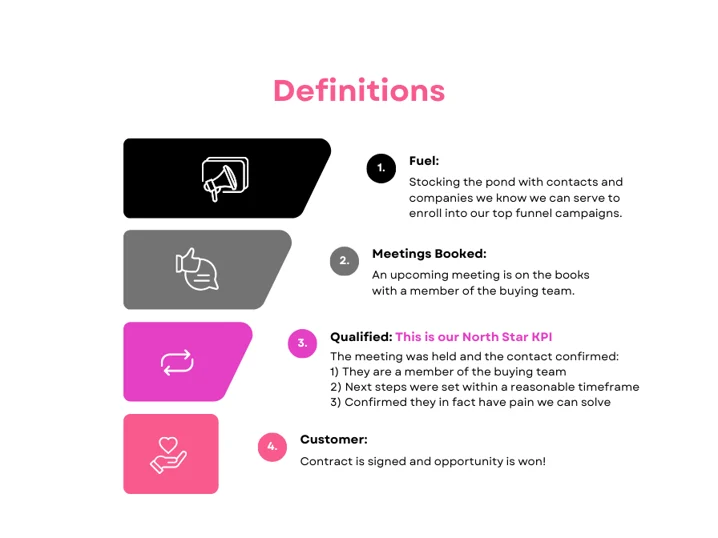The ability to continuously generate a robust pipeline is paramount to achieving client goals and sustaining growth. This requires a methodical approach to “fueling” your sales campaigns and ultimately the funnel. Here, we’ll delve into what “fuel” is in the context of a sales funnel, outline the conversion rates that measure success, and discuss how to ensure the quality of your fuel for optimal results.
Let’s start by breaking down the infrastructure of your fueling model.
What is ‘Fuel’ in Sales?
In sales terminology, ‘fuel’ refers to cold prospects—potential customers who have not yet engaged with your brand but fit into your target market. The ability to convert these cold prospects into paying customers is crucial to the success of any sales operation.
Key Components of a Client’s Fuel Goals:
- Total Addressable Market (TAM): This is the total market demand for a product or service. It reflects the amount of ‘fuel’ available.
- Sales Addressable Market (SAM): These are the “middle of the fairway” targets within your TAM for your sales strategy. This is a segment of the buying team from the companies and industries you serve best.
- Conversion Rates: These are critical metrics that track the transition from cold prospect to booked meeting, from booked meeting to qualified deal, and from qualified deal to a won customer.
Next, we’ll outline your conversion rates. Understanding and optimizing conversion rates at each stage of the sales process is essential:
- Cold to Meeting Booked: This rate measures the effectiveness of initial engagement efforts. It’s calculated by dividing the number of cold prospects who convert into meeting bookings by the total number of cold prospects contacted. Most folks do not know where to start – we recommend a .1%-.2% goal conversion until you have some history for your model.
- Meeting Booked to Qualified: After a meeting is booked, the next goal is to convert this opportunity into a qualified deal. This rate measures the show rate to your meetings, the efficacy of your pitch and the alignment of client needs with your offerings. We recommend three criteria for Qualified; the meeting was held with a confirmed member of the buying team, next steps were set and you’ve identified solution alignment (meaning they have pain we can solve). This is our ultimate KPI for our clients.
- Qualified to Win: The final conversion step is turning qualified opportunities into actual customers. This rate is crucial for understanding the effectiveness of your closing strategies.
To better understand the key stages in the sales funnel and the criteria for high-quality leads, refer to the breakdown below.
 Other Considerations:
Other Considerations:
- Industry Averages: Knowing how your conversion rates compare to industry averages provides insight into your sales team’s performance and market conditions.
- Adjustment of Conversion Rates: If your rates are consistently below industry standards, it might be time to refine your approach and supplement with other strategies.
- Dropout Rate: This rate accounts for the potential loss of prospects due to reasons like email bounces, unsubscribes, no longer with companies, etc. Managing this rate is essential to maintaining a clean and engaged database and the basis of your available fuel.
The Art of Fueling: Ensuring Quality
The quality of your fuel significantly impacts the effectiveness of your sales funnel. Here are some strategies to enhance the quality of your leads:
- Reputable Lead Sources: Utilizing established lead generation sources can provide you with higher-quality prospects who are more likely to engage and convert.
- Validity Tools: Tools like ZeroBounce and Validity can help verify the validity of email addresses, reducing the dropout rate due to bounces or unmanned inboxes.
- Domain Health: Ensuring that your sending domain is in good health is critical for email deliverability. Regular checks for blacklisting and domain reputation can safeguard your email campaigns. Tools like Validity and GlockApps support this well.
- Measuring Campaign Success: Regular analysis of campaign metrics is crucial. It helps in understanding what works and what doesn’t, allowing for timely adjustments to strategy.
Click here to connect and learn more!
